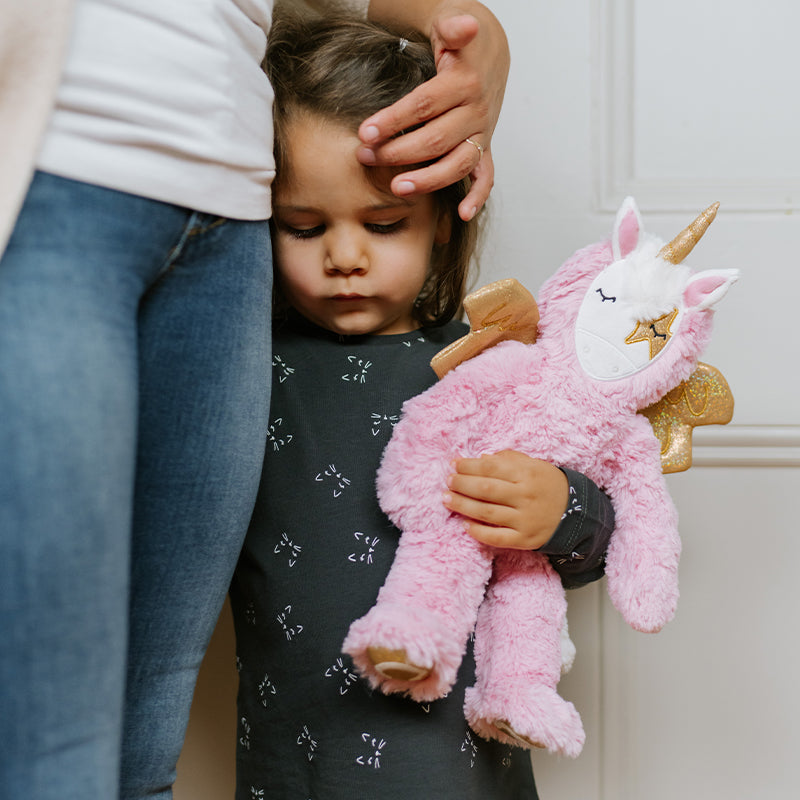Historically, these are just a few of the ways we’ve responded to children’s fear, and even today, children are still receiving messages that their fears aren’t valid. What does all of this lead to? Children believing that the way to be brave is to ignore what scares them.
Words that invalidate our fear cause us to doubt our intuition. Intuition is our ability to immediately and instinctively know or understand something. When we listen to our intuition, it can keep us safe and help us gather valuable information about a situation. Ignoring our intuition can lead to us getting ourselves into risky situations or ignoring signs that something is wrong.
Take a moment to reflect and think back to when you were a child or even now as an adult: How often has your own fear been met with these responses? Now reflect further: Have you ever shared these messages with yourself? Did you find these words helpful, or did they only add shame or embarrassment to your fear?
By reflecting on these questions, we can notice how quickly our culture dismisses fear. This “old way” of speaking about fear teaches children to doubt what they feel in their minds and bodies. Because of this, children may learn to ignore what their instincts are telling them when they don’t feel safe. Here’s a breakdown:
Caregivers say: “Don’t be silly, there's nothing to be scared of.”
Children learn: I can’t trust my body or intuition when I feel afraid. It is silly or embarrassing to be afraid.
When children hear these messages, they may grow up to ignore their intuition when they feel that something isn’t safe. Let’s take a look at a common source of fear for children: bedtime.
How to Handle the Monster in the Closet
Bedtime fears are a nearly universal part of childhood. With the lights turned off, children’s imaginations create a whole host of scenarios that could be playing out in the dark. When your child tells you there’s a monster in their closet or underneath the bed, how often do you dismiss it? Unfortunately, when we simply tell children that there’s no such thing as monsters, not only are they afraid, but they feel alone in their fear.
But we understand, and there are times when we’ve been there too. You’re exhausted, and all you want is for your child (and yourself!) to sleep through the night. However, in situations like this or during other times when your child is feeling afraid, try joining them in their fear. How can you set your child up with tools to empower them in speaking up against it? Maybe that looks like creating a special monster spray that keeps scary creatures away or perhaps try asking questions about their fear to help them process it.
When we use a more empathetic approach to help children when they encounter a scary experience, they feel seen and supported, which can go a long way as they learn to cope with their fears.
How to Address Children’s Fear With Kindness and Understanding
By taking a gentler approach, caregivers and parents help children begin to build a strong foundation of self-trust. The even better news? Children can carry this confidence in their intuition and instincts with them into adulthood and all throughout their lives. Fear can show up in countless ways as they go out into the world and try new things. The following is a good example of what you can say when your child is nervous to join a club, try a new sport, or jump into any unfamiliar experience.
Caregivers say: “Listen to your body, and when you feel ready, you can make your choice to try something new.”
Children learn: I can trust my body and intuition when I feel afraid, and I can face new situations or challenges when I’m ready.
When we treat fear as an opportunity to tune into our senses and listen to our intuition, we discover that feeling fear isn’t necessarily bad, but instead, an emotion that’s here to help us navigate new and difficult situations with self-knowledge and ultimately, self-trust.
Ready to celebrate the Halloween season and support your children in navigating their fears? Pick up a copy of “Halloween Fright” and meet all of our Halloween kins and minis here.







